Art doesn’t always have to be soft, serene, or beautiful. Sometimes, the most unforgettable pieces are the ones that catch us off guard the ones that scare us, unsettle us, and still pull us in. It’s Scary, but Impressive is a handpicked visual experience of 30+ new images that sit right on that edge where fear meets fascination. These works don’t just aim to disturb; they challenge you to look closer. To notice the emotion hidden behind the eerie. To feel both amazed and uncomfortable, all in the same breath.
In this collection, you’ll see everything from nightmarish sculptures and surreal paintings to ghostly photographs and disturbing installations. What makes them stand out is the haunting beauty buried within the horror. Some images whisper in the dark, while others scream with bold shadows and macabre details. But all of them share one thing in common they make you feel something real.
If you’ve already explored our previous piece, Creepiest Art From Around the World (28 New Images), then you know what kind of chills we’re talking about. That article was just the beginning. This one goes deeper, pulling you further into the unsettling corners of artistic expression where the strange and the symbolic collide.
Whether you’re a fan of horror art, enjoy gothic vibes, or just love content that breaks the rules of “normal,” this new list will stick with you. These aren’t your everyday Pinterest aesthetics. They’re raw, emotional, and often hard to define. But in that discomfort, something strangely powerful lives.
So take a deep breath. Scroll slowly. And don’t be surprised if you find yourself strangely captivated by the dark side of imagination. After all, the line between fear and beauty is thinner than we think.
-
At first glance, this image feels dreamlike two figures wrapped in scarves, locked in a quiet moment by the misty sea. But then the surreal horror sets in. One figure bears the elongated, ghost-white head of a dolphin not a mask, not a costume, but something far more unsettling. It's not just a creature trying to look human—it’s something human that has surrendered the comfort of its own identity. The tender hand resting on the other’s chest brings an eerie contrast, blending intimacy with the grotesque. There's no visible fear or alarm—only stillness. That’s what makes this image so disturbing. It doesn’t scream. It doesn’t chase. It simply exists in a liminal emotional space, where love meets mutation, where connection morphs into something unknowable. You want to look away—but you don’t. Because there’s something fragile, almost sacred, hidden beneath the horror. And that strange duality? That’s what makes it unforgettable.
-
Advertisement
2 Glitter and Teeth Don’t Lie
This is beauty turned inside out. A face that glistens with shimmer and sea-wet gloss, but instead of inviting softness, we’re met with rows of jagged, predatory teeth. The figure holds its own face, not in vanity, but almost in agony—like it knows what it’s become. The eyes remain hauntingly human, filled with emotion, almost pleading. But the rest? A twisted siren pulled from the deep—part fantasy, part nightmare. The contrast between the delicate jewelry, manicured nails, and the monstrous shark-like mouth is deliberate. It forces you to reconcile two conflicting instincts: attraction and fear. You want to appreciate the glitter, the textures, the craftsmanship. But your gut twists at the thought of what it would be like to hear this thing speak. Or scream. It’s a perfect example of art that disturbs because it refuses to pick a side. It doesn’t ask to be pretty. It dares to be unforgettable.
-
This one feels like a prophecy whispered from the edge of the world. The figure is not just painted in black—it is sculpted from it. With cracked, coal-like textures across the skin and horns that curve with ancient weight, this isn’t just a costume; it’s a character born from myth, forged in fire. The pale eyes pierce through the darkness with an unsettling calm, as though they’ve seen centuries pass and burned empires fall. There is no scream here, no overt aggression—just a frozen stillness that feels louder than any sound. The background is muted and desolate, making the figure seem even more like an elemental god or ghost. It walks the line between divine and demonic, elegance and terror. It's the kind of art that doesn't ask questions or offer answers—it simply stares back, making you wonder whether it’s a mask or a mirror.
-
Advertisement
4 Drowned in Gold, Not Peace
This haunting portrait captures a surreal collision of luxury and loss. A face half-sunken in black water, wrapped in what appears to be volcanic rock, stares upward with unsettling stillness. The skin is partially coated in a cracked mask of gold—flawless yet fractured—clinging to flesh like a memory refusing to fade. There’s something unnervingly serene about their eyes, as if they've surrendered to something far beyond rescue or reason. The muddy pool surrounding the figure acts like a mirror to the void above, deep and silent. This is not a resurrection; it’s a slow, beautiful drowning. It evokes questions—was this figure gilded in life or death? Is this a shrine, a ruin, or an unfinished transformation? The image doesn’t scream for attention—it whispers secrets through stillness, daring the viewer to look beyond the gold and into the suffocating quiet that lies beneath.
-
This haunting portrait toes the line between nature and nightmare, blending the delicate elegance of a human form with the invasive textures of fungal growth. The figure’s head is crowned with what resembles a massive mushroom cap—organic, fleshy, and almost regal in its decay. Veins of mycelium stretch down the neck like a living map, consuming skin and identity with quiet certainty. It's not grotesque in a traditional sense—rather, it’s disturbingly serene. The subject’s eyes are downcast, lost in thought, or perhaps lost to the transformation entirely. This image taps into primal fears: of losing control, of being overtaken by something ancient and unknowable. It evokes myths of dryads, changelings, and parasitic gods—stories where the earth doesn’t just reclaim flesh but reshapes it. In its eerie stillness, this artwork forces a deeper contemplation: what if beauty lies not in resisting nature, but in surrendering to it completely?
-
Advertisement
6 The Watchers of the Shoreline
There’s something hypnotic about these twin figures cloaked in darkness, their skin cracked like porcelain left too long in silence. Adorned with small horns and veined with gold filigree, they don’t scream horror—they whisper it. Their expressions are unreadable, caught between grief and apathy, as if they've watched something ancient rise from the sea too many times to be surprised. The horns suggest a demonic origin, but their beauty complicates judgment. Are they cursed beings bound to the shore, or silent witnesses to something more divine? The makeup, or perhaps their skin itself, seems painted with delicate fractals of decay, yet the effect is ethereal. They could be priests of a forgotten tide god, or exiles from another realm altogether. It’s this ambiguity that grips the viewer: the collision of sacred and sinister, the elegance of danger. They're not here to harm—but to remind us that something always watches back from the waves.
-
This haunting one captures the intimate paradox between creation and decay. One figure is pale, freckled, and almost angelic—eyes closed in surrender, expression serene. The other is jet black, its cracked surface resembling ancient marble worn by time. But the dark figure doesn’t simply embrace—it merges, consumes, becomes a part of the other. The kiss it delivers isn’t of love, but of permanence—like a sculptor casting a moment in stone. There's an unsettling stillness, a sense that one soul is becoming memory while the other becomes monument. The water droplets and subtle gold veining add layers of realism and myth, making the scene feel like something carved from grief itself. This is art that whispers about the cost of closeness, the weight of emotional scars, and the strange beauty of losing yourself to another. It doesn’t ask if you’re comfortable. It dares you to feel—and leaves you unsure if what you felt was love or loss.
-
Advertisement
8 The Gaze That Strikes First
Draped in shadow and lace, this figure stares through a veil of mystery—her eyes obscured by the sleek curve of a black serpent coiled with unsettling grace. The snake becomes both crown and blindfold, its body merging with the netted veil like an extension of her own thoughts. Is it guarding her? Or is it blinding her to something she does not wish to see? Her expression is calm, too calm, as if she has long made peace with the darkness that rests so near. The seaside backdrop feels distant and irrelevant—the tension is all in her face, her pose, the silent threat coiled across her vision. There's no scream here, no violence. Just the quiet power of being watched by something that also watches you. In this image, fear is elegance. And elegance has fangs. It’s a striking collision of beauty and danger, poised somewhere between myth and mourning.
-

A haunting scene unfolds in a dimly lit room where reality blurs with the imagined. A young woman, bathed in the red glow of scattered candles, moves as though entranced—her body pulled toward something unseen, her gaze locked on the wall ahead. But it’s the wall that tells the real story. There, her shadow dances not alone but locked in an eerie waltz with a horned figure, devilish and intimate. It’s not just a trick of the light—it’s a chilling metaphor for seduction, possession, or surrender to something darker than ourselves. The unsettling duality between her innocence and the demonic silhouette creates an emotional tension that’s hard to shake. The room, littered with overturned frames and a hanging cross, whispers of a past faith long broken. This isn’t just horror—it’s storytelling. An echo of vulnerability in a place where the shadows hold more truth than the girl herself can bear to face.
Want more unsettling folklore? Don’t miss The Scariest Monsters from Myth and Legend That Will Haunt Your Dreams.
-
Advertisement
10 The Ones Who See Too Much
Emerging from cracked stone and blackened earth, these eerie figures are cloaked in fragmented armor—each shard embedded with an unblinking golden eye. The visual is both mesmerizing and disturbing, echoing the feeling of being watched from all directions, as if privacy no longer exists. Their expressions remain human, soft and contemplative, yet their gaze—multiplied across faces and hoods—projects a supernatural awareness. It’s the kind of image that taps into a primal fear: surveillance without escape. These aren’t merely beings; they are witnesses. Guardians of forgotten knowledge or maybe the embodiment of judgment itself. The cracked texture of their armor contrasts the lifelike precision of the eyes, creating a haunting duality—alive, but not quite. There’s something ancient and mythic about them, as if pulled from a dream where truth and paranoia blend. In a world that never blinks, how much can you hide before everything sees through?
-
There’s a haunting stillness in this portrait of a figure whose face seems carved from porcelain—cracked, imperfect, yet achingly beautiful. Embedded in one side is a cluster of translucent crystal-like shards, as if her thoughts were solidifying into a visible, fragile truth. Her eyes remain closed, not in peace, but in quiet resignation. The image feels like a moment suspended in aftermath—after the fracture, after the transformation, after the world changed her shape. The dirt speckled across her surface hints at time, decay, or maybe rebirth. There’s no blood, no violence—just the eerie elegance of something broken becoming something else. She doesn’t need to speak; the stillness says enough. This is not a sculpture, but a being that exists between human and relic, between memory and ghost. A strange fusion of vulnerability and hardness, it dares you to look closer—because beneath that cracked beauty lies a deep, disquieting story.
-
Advertisement
12 The Watcher and the Worn
There’s something unsettling about this image that makes it hard to look away. A dark parrot—larger than life—wraps around the face of a pale, expressionless figure like a second skin, its beak resting ominously near the eye. The bird’s eye is alert, piercing. The human’s eye, in contrast, is drained of color, almost ghostly in its emptiness. Together, they form a strange creature: part human, part avian, all unnerving.
The water droplets on their skin and the dark fabric covering the lower half of the face only deepen the mood—like a ritual in progress or the moment before transformation. Is this a symbol of possession? Protection? Or something more parasitic? The symbiosis here is too perfect to be accidental, yet too eerie to be comforting.
This surreal vision is the kind of visual myth that feels pulled from another world—one where masks are alive and spirits perch silently over human hosts.
-
Submerged in still water, this forest-dweller appears more creature than human—yet their eyes tell a deeply human story. Coated in layers of mud and adorned with a crown of damp leaves, the figure seems to have emerged from the earth itself, as though nature sculpted it to observe us in silence. The beak-like nose and textured skin blur the line between man and myth, hinting at something ancient and untamed. There's a tension in their expression—an eerie calm that comes from knowing something we don’t. The natural camouflage and the swampy surroundings make them look like they’ve always been there, waiting, blending in. It's both unsettling and oddly poetic, like a forgotten guardian of the forest. This image doesn’t need motion or menace to disturb; it does so through stillness, by being too real and too unreal at once. It haunts gently, like folklore that never needed words to be believed.
-
Advertisement
14 Where the Soul Cracks Open
This haunting figure sits in silence, hands pressed into its face as if the weight of existence itself has become too much to bear. At first glance, it resembles a sculpture—cold, cracked, and worn by time. But the sadness radiating from it is unmistakably human. Parts of the body appear to be crumbling into earth or ash, as though despair has eroded the flesh, leaving behind only remnants of who they once were. The cracks tell a story—of grief, of solitude, of silent suffering. It’s disturbing not because it’s monstrous, but because it’s too real. A visual metaphor for emotional decay, for the slow unraveling that no one sees happening until it’s too late. There is no blood, no violence—just stillness and the unbearable weight of thought. It evokes that quiet dread we sometimes carry, the feeling that we are falling apart from the inside, piece by piece.
-
These fractured legs, standing alone on a desolate beach, seem to tell the story of a body long gone but a presence that lingers. Made of jagged stone, their texture is harsh, almost brutal—yet from within, warm glows of light push through the cracks. It's haunting, yet strangely intimate. Like remnants of a love that once was—burned out, broken, but still flickering with memory. The lights inside don’t scream for attention. They glow softly, like the final embers of something once powerful. You can almost imagine the footsteps in the sand belonging to a ghost—someone who left everything behind, except pain that still pulses beneath the surface. There’s something poetic here. A ruin that still breathes. A reminder that even in isolation, the things that once lit us up never fully disappear. The body may collapse, but the emotions—raw, buried, glowing—stay etched into time and earth.
-
Advertisement
16 When Hunger Wears a Human Face
There’s something hauntingly symbolic about this image—a shark’s open jaw fused with a human figure, cradling another like a predator sheltering its prey. The ocean behind them is cold and gray, mirroring the mood of the scene. One figure, half-shark, radiates raw danger—mouth agape, rows of teeth bared, the ultimate symbol of instinct and survival. But nestled within that danger is something soft: another human, calm-eyed, wrapped in the same dark fabric, almost merging into the predator’s form. It’s a surreal embrace of fear and intimacy—an eerie suggestion that sometimes the things that protect us are also what can consume us. The glossy black fabric that binds them glistens with sea mist, like funeral veils soaked in grief or devotion. It's terrifying in the quietest way, making you question where the line is between love and control, between being held and being hunted. A visual paradox: beautiful, unsettling, unforgettable.
-

There’s an odd joy and eerie calm in this illustration—a goat-legged satyr wading through still waters with his child perched on his shoulders, both smiling in a way that blurs the line between innocence and mischief. Their faces are expressive, almost too human, yet unmistakably mythological. The father's grin holds centuries of forest wisdom and trickery, while the child’s laughter rings with untamed chaos. The landscape is dreamlike—lush yet fading, like a memory from a forgotten folktale. What should feel lighthearted instead leaves a whisper of unease, like you're witnessing a ritual or moment not meant for human eyes. The way the water reflects them feels too still, too silent. This piece doesn’t scream horror—it smiles it. It’s the type of unsettling beauty that makes you glance twice, unsure whether you’ve stepped into a fairy tale or a warning.
Want more unsettling folklore? Don’t miss The Scariest Monsters from Myth and Legend That Will Haunt Your Dreams.
-
Advertisement
18 Cold Embrace
This haunting image captures a moment of frozen tenderness—one figure seemingly made of crystalline ice, the other cloaked in a damp, earth-toned hood. Their closeness is intimate, yet the feeling is far from comforting. The face of the crystal being is calm, even serene, but its glassy texture and jagged form suggest something fragile and alien. It’s as if this is love between two elements that were never meant to meet—flesh and mineral, warmth and cold. Water droplets cling to both, blurring the line between sweat and sorrow, rain and melting. The person in the hood disappears almost entirely, consumed by the icy entity’s perfection. The longer you stare, the more you question—who is real, and who is vanishing?
It’s a visual metaphor for toxic closeness or the emotional toll of hiding yourself in someone else’s shadow. It’s scary because it feels real.
-
Half-hidden and cloaked in what seems like wet, organic armor, these figures stare out with haunting stillness. Their eyes—piercing, alert, and utterly human—are the only points of warmth in an otherwise damp and desolate landscape. Barnacles or fungal growths cling to their blackened hoods, suggesting they’ve been here a long time, perhaps too long. They look like spirits of the terrain, guardians of something ancient and unspeakable. There’s no sense of welcome in their gaze—only warning. They are not waiting for you. They are watching what you bring with you.
This image leaves you with a sense of being observed by forces that exist outside of time, of standing too close to a truth no one was meant to see. It is beautiful in its unease—cinematic, ritualistic, and subtly terrifying.
-
Advertisement
20 The Drenched Colossus
Standing alone against a backdrop of fog and surf, this towering form feels more like a haunting than a sculpture. Its body, cloaked in a white sheet stained with smears of red, suggests something that was never meant to be seen—let alone remembered. The shape is vaguely humanoid, but slouched in a way that makes it appear both mournful and monstrous. There are no visible features, no eyes to meet, no mouth to explain—just a hulking, bowed presence that feels ancient and alien.
The blood-like stains make you question whether you’re witnessing the remnants of violence or a symbolic ritual gone wrong. Its posture is almost fetal, as if in a state of grief or shame, but its scale makes it terrifying. The beach, typically a symbol of calm and vacation, becomes a desolate, charged space.
-
In this haunting visual, a human figure emerges between two pristine white parrots, but their expression is anything but calm. Their face is partially masked in a glossy, stone-like texture, as though nature is fusing them with an alien skin. The parrots, while elegant, don’t look peaceful—they seem to guard, observe, maybe even control. Their presence adds tension, as if they are messengers or keepers of an unspoken ritual.
The muted palette and shadowed light create an almost sacred stillness. But there’s a weight to the silence—a message trapped in the gaze, in the glossy, inhuman skin. Is this transformation? Or possession? The juxtaposition of purity and distortion leaves the viewer unsettled, caught between admiration and fear.
It’s a powerful image that lingers, pressing viewers to interpret what’s hidden behind beauty and symmetry. The deeper you look, the more off-balance you feel.
-
Advertisement
22 Spores of Silence
This image pushes the boundary between human form and fungal growth into eerie territory. The figure stands with delicate, translucent skin—almost ghostly—but where a head should be, an enormous mushroom cap erupts. The textures are uncomfortably organic: the pores, the folds, the mycelium-like neck blending seamlessly into the upper torso. There are no eyes, no mouth—only a swollen crown of decay and life intertwined.
It evokes a biological horror: transformation by nature itself. It’s as if the body has been claimed, repurposed by the forest, stripped of identity. The longer you stare, the more you question whether this is art or evolution—a slow, fungal takeover that’s beautiful in form yet deeply unsettling in meaning.
There’s an eerie silence to this image, a sense that it belongs in a dream—or a nightmare—where humans and nature no longer fight but fuse.
-
At first glance, this figure in sheep’s clothing evokes a sense of innocence and softness. But the illusion quickly unravels. Blood smears down the creature’s cheek, staining the pristine wool and shifting the narrative from peaceful to deeply disturbing. The eyes are closed—not in sleep, but in something more sorrowful, perhaps a reflection of regret or remembrance. Is it the predator disguised as prey, or the prey who’s seen too much?
Set against a cold, sterile backdrop of a red building, this surreal image plays with visual dissonance. The soft textures and muted colors create a false sense of comfort, while the unsettling details—human posture, blood, the lifeless expression—whisper something sinister. It blurs the line between costume and creature, victim and villain, calm and chaos.
The visual tension is deliberate and haunting. This isn't a sheep. This is a memory, a mask, a monster in mourning.
-
Advertisement
24 The Cry of the Fleece
This surreal image stops you in your scroll with a jolt—something about it feels funny, familiar, and yet entirely off. A creature cloaked in soft, white wool appears to be mid-scream. At first glance, it might seem like a cozy winter shot, until your eyes settle on the gaping mouth, eerily human in its anguish. The body is swaddled in sheep-like fluff, but the scream breaks through the warmth like a warning. It’s not just strange—it’s unsettling.
The setting remains the same as the last sheep figure: a red building, empty fields, and muted skies. Yet here, the figure doesn’t look tired or mournful—it looks wild, desperate, uncontained. It mocks comfort, pushing the idea of protection to the extreme, hiding identity until all that’s left is raw emotion forced through fabric.
This is no lamb. It’s a primal shriek trapped in the softness of a lie.
-
This haunting image is a study in contrasts—softness wrapped in tension, purity laced with menace. At the center is a pale figure, nearly lifeless, their face swathed in delicate white fabric like a modern-day mummy or a ghost caught mid-dream. But coiled around them, nestled against their cheek and eye, is a white serpent—elegant, powerful, and eerily calm. Its scales shimmer like porcelain, yet its gaze is cold and alert, guarding or claiming its host.
There’s something sacred and terrifying in this pose. It feels ritualistic, like a forgotten goddess being offered to silence or swallowed by something divine and ancient. The lips are slightly parted, suggesting surrender, or perhaps a secret too heavy to speak. This isn’t death. It’s devotion. Submission. Or transformation.
The more you look, the more it blurs—what’s alive and what’s not, what’s human and what’s predator. The kind of image that doesn’t shout but lingers like a warning whispered in silk.
-
Advertisement
26 The Weight of Becoming
This figure appears as if carved from stone—an ancient sculpture weathered by time yet caught mid-motion. His posture is heavy, bent forward, not with weakness, but with the burden of existence. His body, though seemingly human in form, is streaked with earthy veins and marble-like fractures, blurring the boundary between the organic and the petrified.
There’s something sorrowful in the way he bows his head, as if mourning his transformation or surrendering to it. The muddy stains across his limbs suggest a fall from something divine into something mortal—or the reverse. He looks as though he was born from the land itself, pulled from the riverbed and shaped by centuries of silence.
The background, pale and formless, only adds to the isolation. It’s as though he is suspended between worlds—no longer man, not quite monument. This image doesn’t ask to be understood; it only asks to be felt. And it feels like loss, like beauty cracking under pressure.
-
Rising from the sand like sacred relics, these statuesque forms stare skyward, frozen in a moment of longing—or revelation. Their eyes glow not with sight, but with something deeper: memory, prophecy, or the silent scream of something forgotten. Cracks run along the smooth stone skin, hinting at a past fracture or a birth through force. They seem like guardians from another world, half-buried and half-awake, watching a sky that no longer hears them.
There’s a haunting calm in the image—an eerie stillness that blurs the line between life and sculpture. The barren beach adds to the mood, as if the tide once swallowed everything and left only these to remember. Their posture is hopeful, but their gaze is hollow. Are they searching for salvation, or simply mourning the silence?
Whatever they once were, they now exist as warnings carved into stone—beautiful, broken, and eerily alive in a place where nothing should speak.
-
Advertisement
28 The Watcher’s Curse
This haunting portrait blurs the line between human and myth. A woman’s solemn face stares forward, calm and unreadable, framed by an eerie crown of countless watchful eyes. Each eye, detailed with veins and wet glisten, seems to scan the viewer with an intelligence all its own. Her expression is soft, but not peaceful—it’s as though she bears the weight of seeing too much, of being eternally watched and watching in return.
The cracked metallic texture on her skin suggests something ancient and broken beneath the surface, like armor worn for centuries. She looks like a priestess of forbidden knowledge or the embodiment of a forgotten curse, wrapped in a beauty that unsettles more than it comforts. Every tear on her face feels deliberate, as if her sorrow has purpose.
It’s not clear whether those eyes protect her or imprison her—but one thing is certain: once you meet her gaze, you won’t forget it.
-
This chilling yet intimate image captures a moment of surrender to something ancient, alien, and unknowable. A pale figure stands with eyes closed, vulnerable and seemingly entranced, while a dark, almost volcanic being leans in—its face half-consuming theirs. The contrast is stark: soft flesh and raw emotion against the cold, hardened texture of something not entirely human.
The figure’s expression is hauntingly peaceful, yet stained with dark tears that hint at a deeper, unspoken horror. The creature behind them isn’t aggressive—it’s almost gentle—but its presence feels suffocating, like a shadow whispering secrets no one should hear. This isn’t a lover’s embrace; it’s a binding. A merging. A quiet loss of self.
It evokes the fear of being consumed—not violently, but slowly, through trust, comfort, or despair. It’s the moment when you stop resisting, when you let the darkness cradle you… and forget where you end and it begins. Disturbing, yet tragically beautiful.
-
Advertisement
30 The Weight of Who We Were
This haunting image speaks to the quiet burden of identity and memory. A lone figure kneels on the shore, eyes closed, seemingly at peace—yet what surrounds them tells a more unsettling story. Resting on their shoulder is a fragmented stone face, half-human, half-mask, as if whispering the weight of forgotten selves into their soul. Below, another face lies partially buried in sand, detached, still, and eerily serene.
The wind-blown beach, the gray skies, and the pale expressions of the stone faces create a stark, melancholic mood. It feels like a mourning ritual—laying to rest the versions of ourselves we no longer recognize. The figure, dressed in black, represents the last breath of a person worn down by the masks they've carried, now surrendering them to the earth.
There’s something deeply human in this surreal display. A reminder that even in our darkest solitude, we carry echoes of every identity we've ever worn—and letting go isn't always peaceful.
-
There’s something strikingly poetic about this moment—a pale figure, adorned in cracked white paint and smeared black tears, embraced by a partner shrouded in total darkness. Both wear the same synthetic veils, drenched in rain, as if the storm around them has sealed this frozen intimacy. Their eyes closed, they exist in perfect stillness. One mourns visibly; the other mourns silently.
The visual contrast is bold—light and dark, fragile and impenetrable, visible anguish and stoic sorrow. Yet they are inseparable. This is not just a photograph; it’s an emotional sculpture. It captures the weight of carrying both pain and peace, the duality of our inner worlds. Sometimes the softest part of us leans into the hardest. Sometimes grief wears makeup and stands upright, while its twin hides behind it in shadow.
This image belongs in the space where love, death, and memory converge—where even darkness can be gentle, and even light can weep.
-
Advertisement
32 Tidebound Soul
This haunting image captures a figure that seems to exist between two worlds—part human, part deep-sea relic. The subject wears a hauntingly intricate fish-head mask, not merely as a costume, but as a second skin. Its fins jut out like memories refusing to fade, and the cold expression on the face suggests resignation rather than rebellion. Draped in a slick, sand-dusted cloak, the creature stands by a bleak, grey shoreline that feels more like a forgotten dream than a real place.
There’s something mournful yet majestic here. You can almost feel the salt in the air, the weight of a thousand drowned stories behind those glassy eyes. Is it a warning from the ocean? A spirit caught between evolution and extinction? Or a symbol of how identity can be shaped—distorted—by isolation?
Like much of the imagery in It’s Scary, but Impressive, this portrait unsettles not through horror, but through elegance cloaked in sorrow.
-
Emerging from the earth like a forgotten relic, this dual-faced sculpture carries an uncanny tension—one side smooth and serene, the other cracked, corroded, and ominously alive. It’s as though two souls are trapped in a single form, each pulling the other in opposite emotional directions. The soft features on the left suggest calmness, vulnerability, and perhaps a longing to look away from the chaos. Meanwhile, the darker face stares forward with silent judgment, almost as if it's watching you watching it.
This piece evokes the uncomfortable duality many of us feel—the polished mask we show the world, and the raw, fractured truth we hide. It mirrors the essence of It’s Scary, but Impressive perfectly: beautiful in construction, terrifying in meaning. It doesn’t scream horror—it murmurs it, and that whisper lingers. You don't know whether to keep staring or to look away. And maybe that’s what makes it unforgettable.






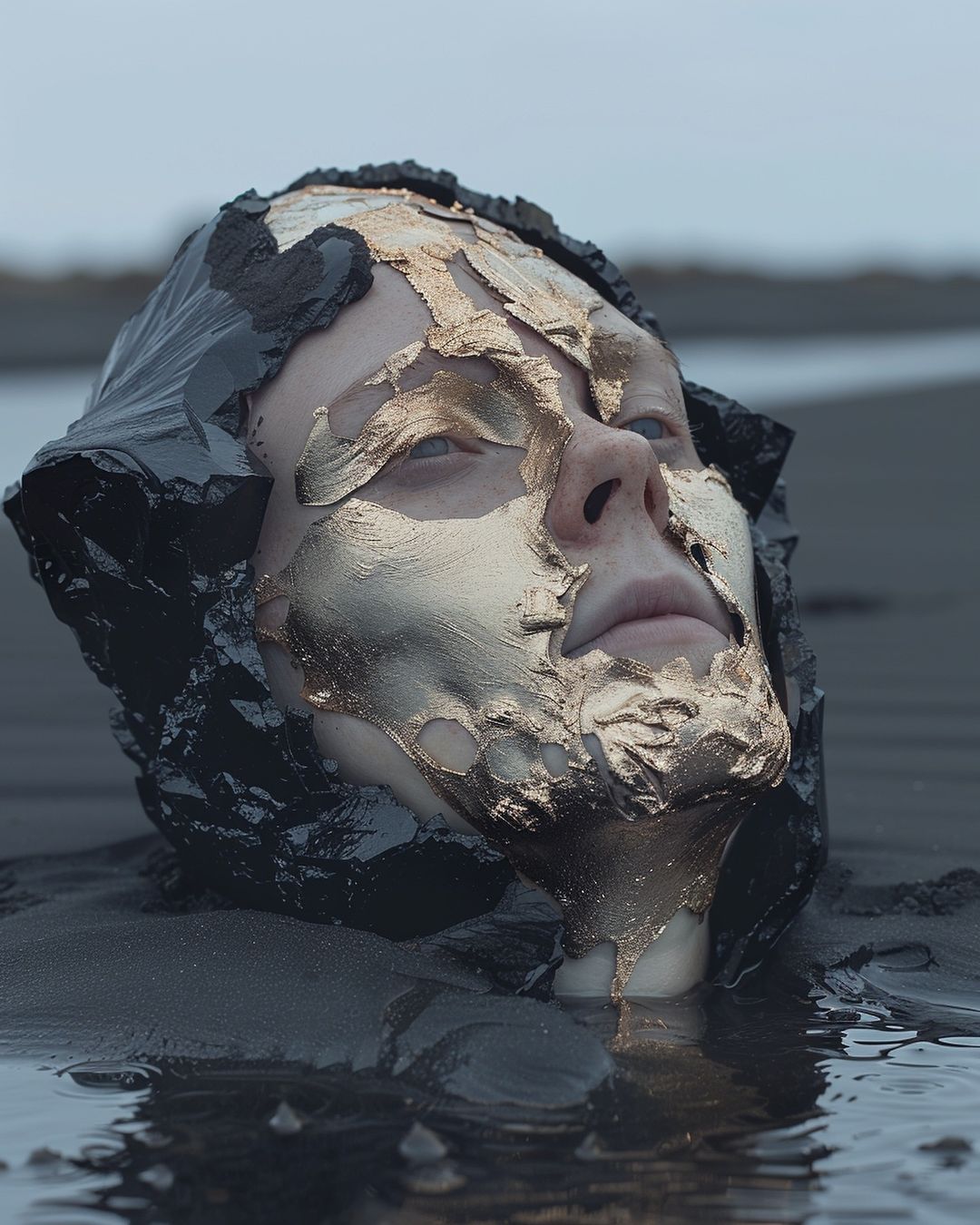
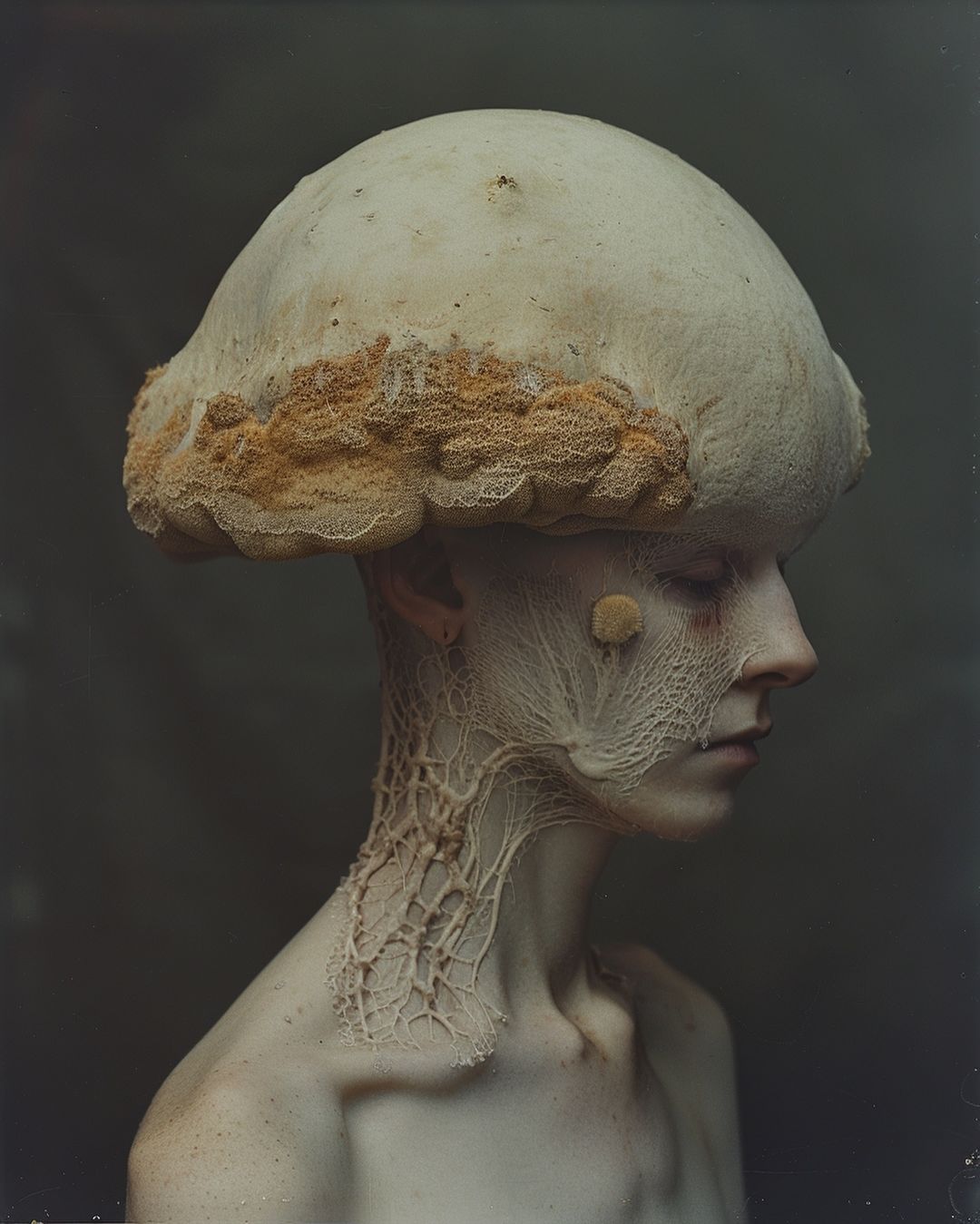



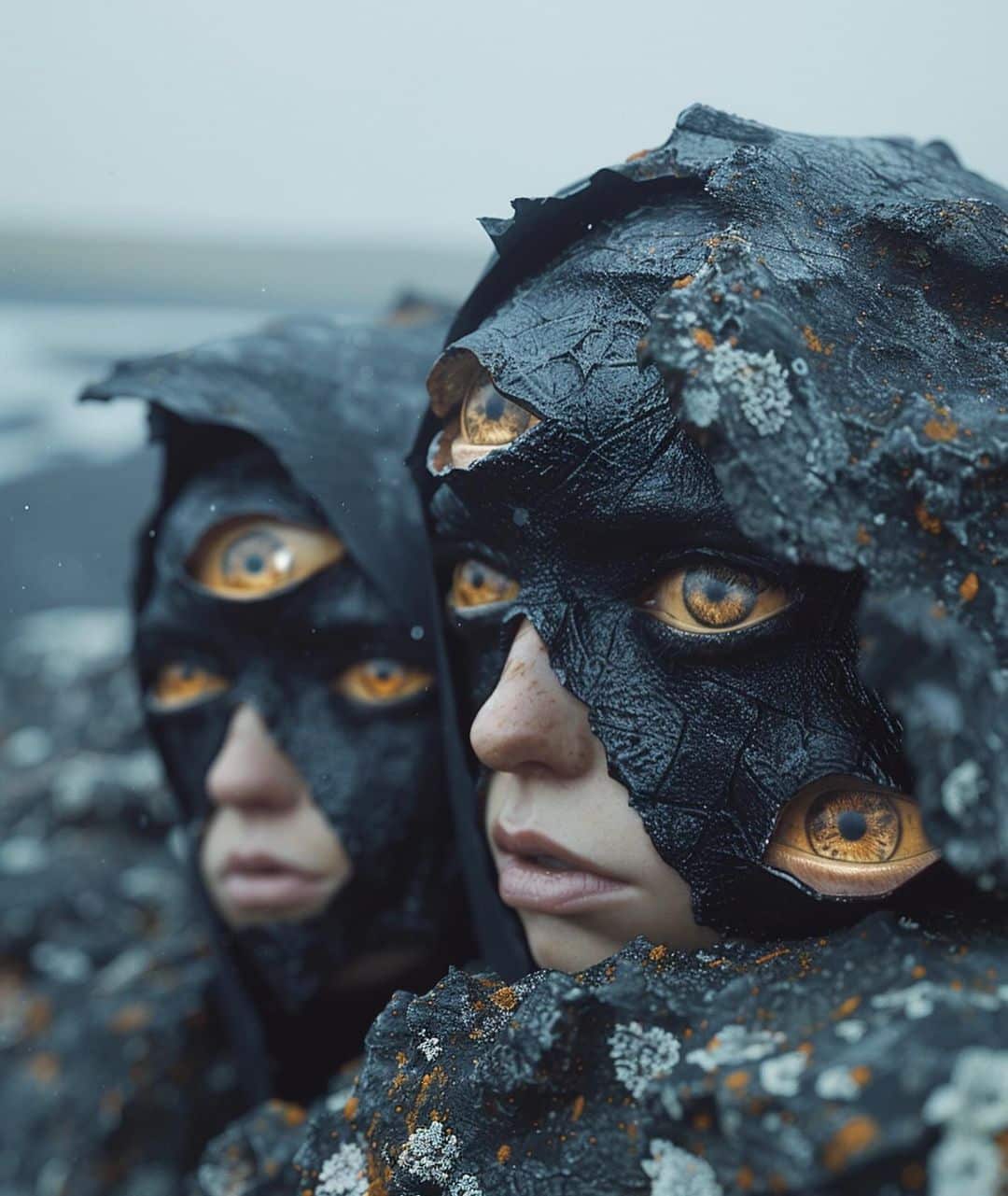


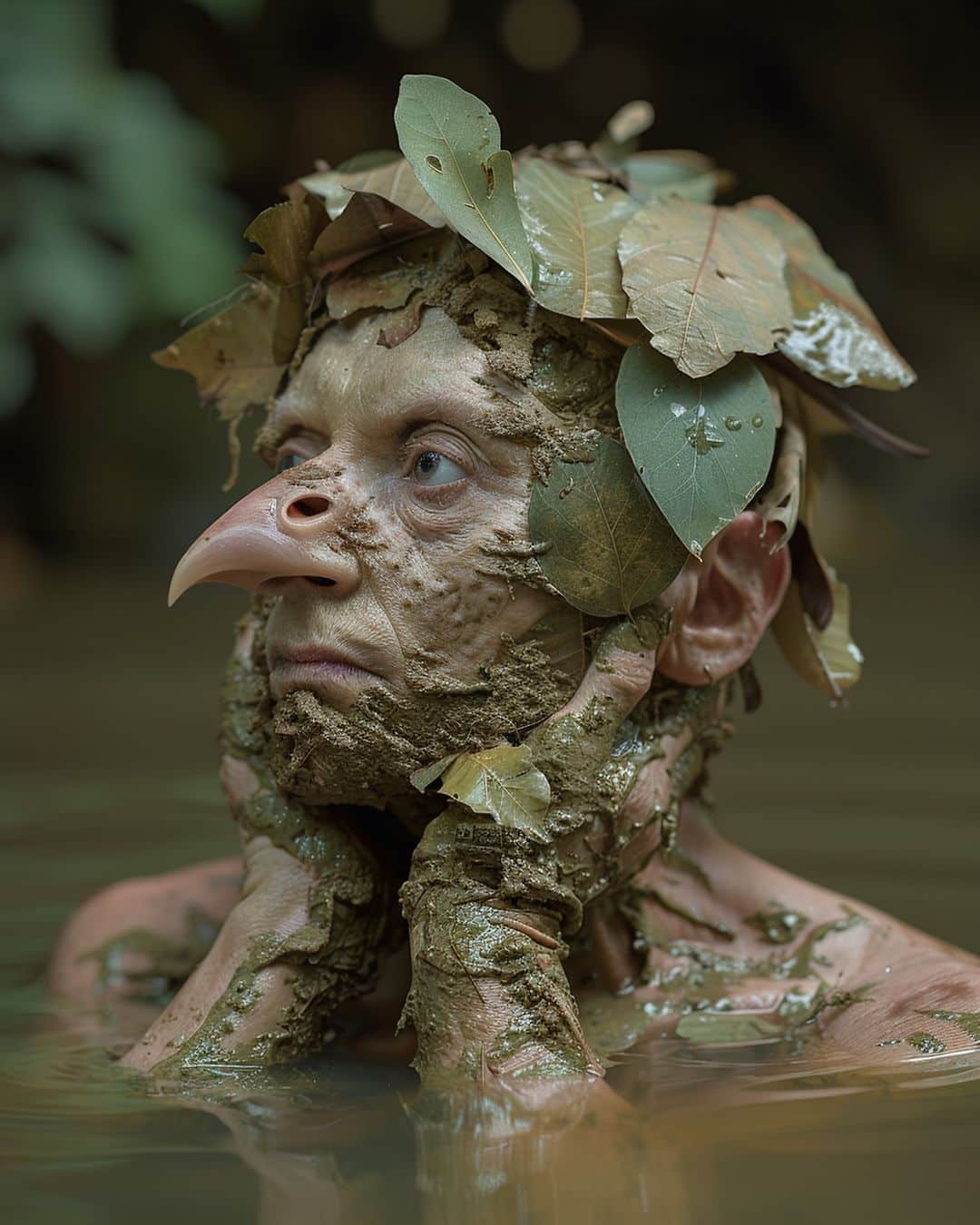
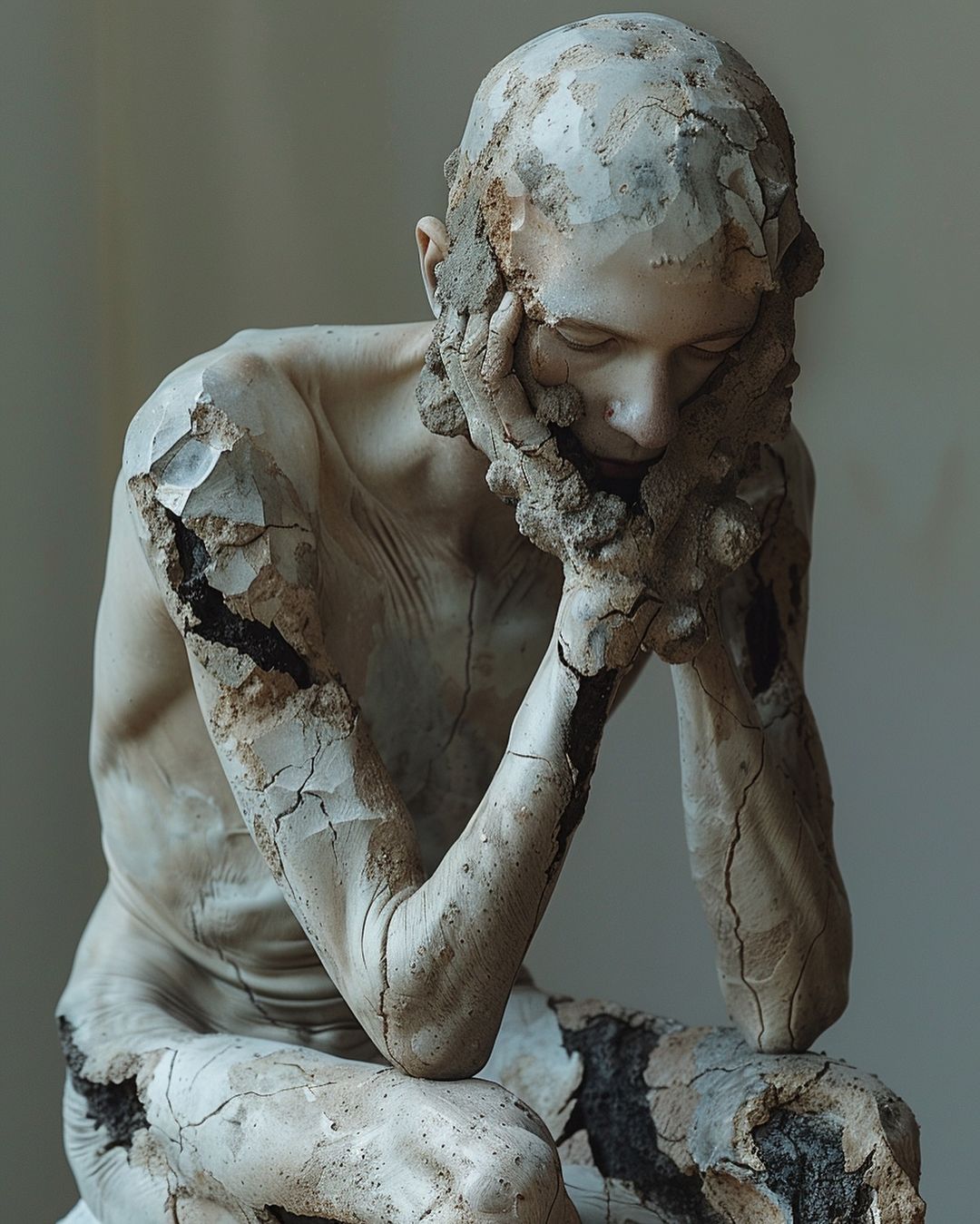
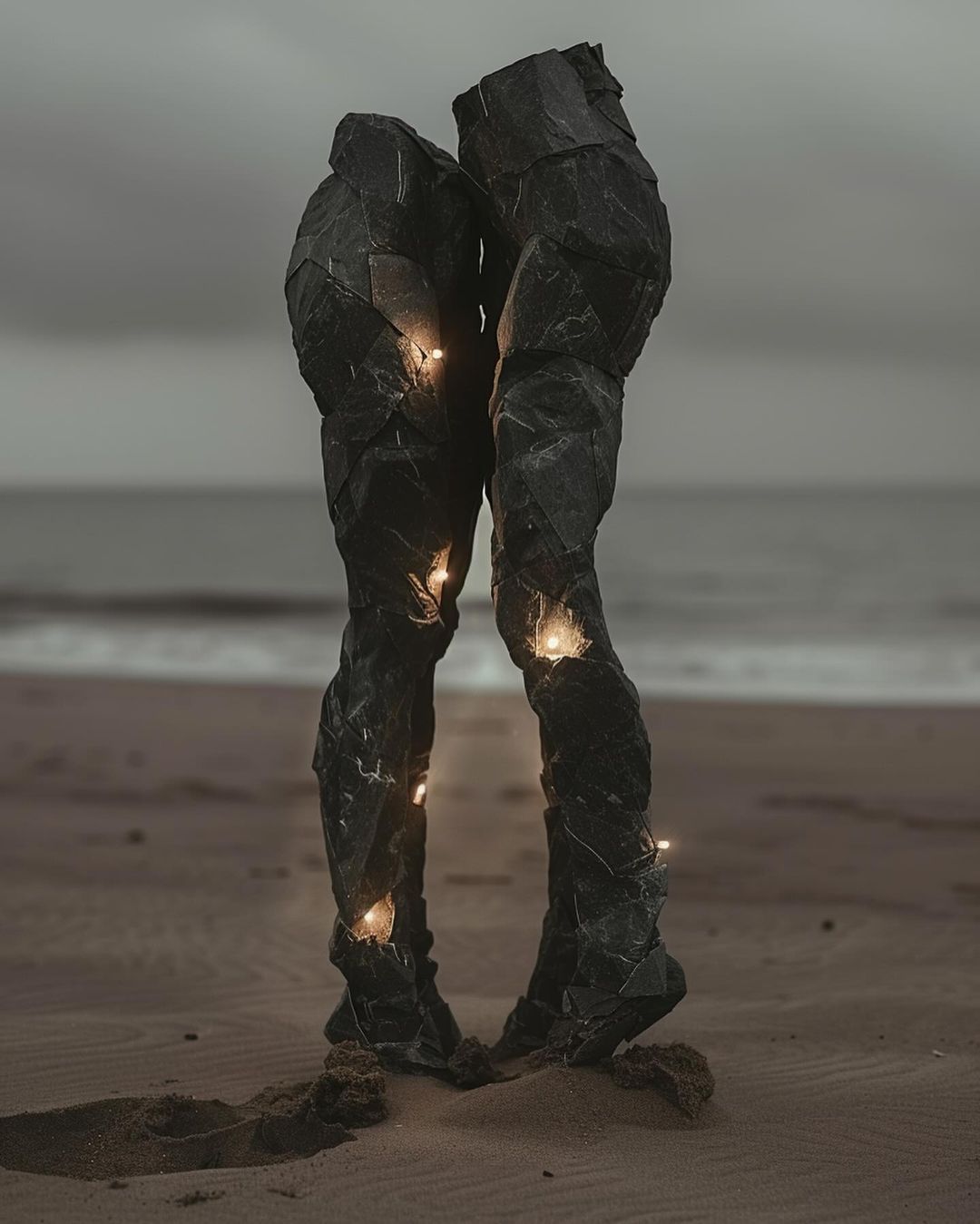
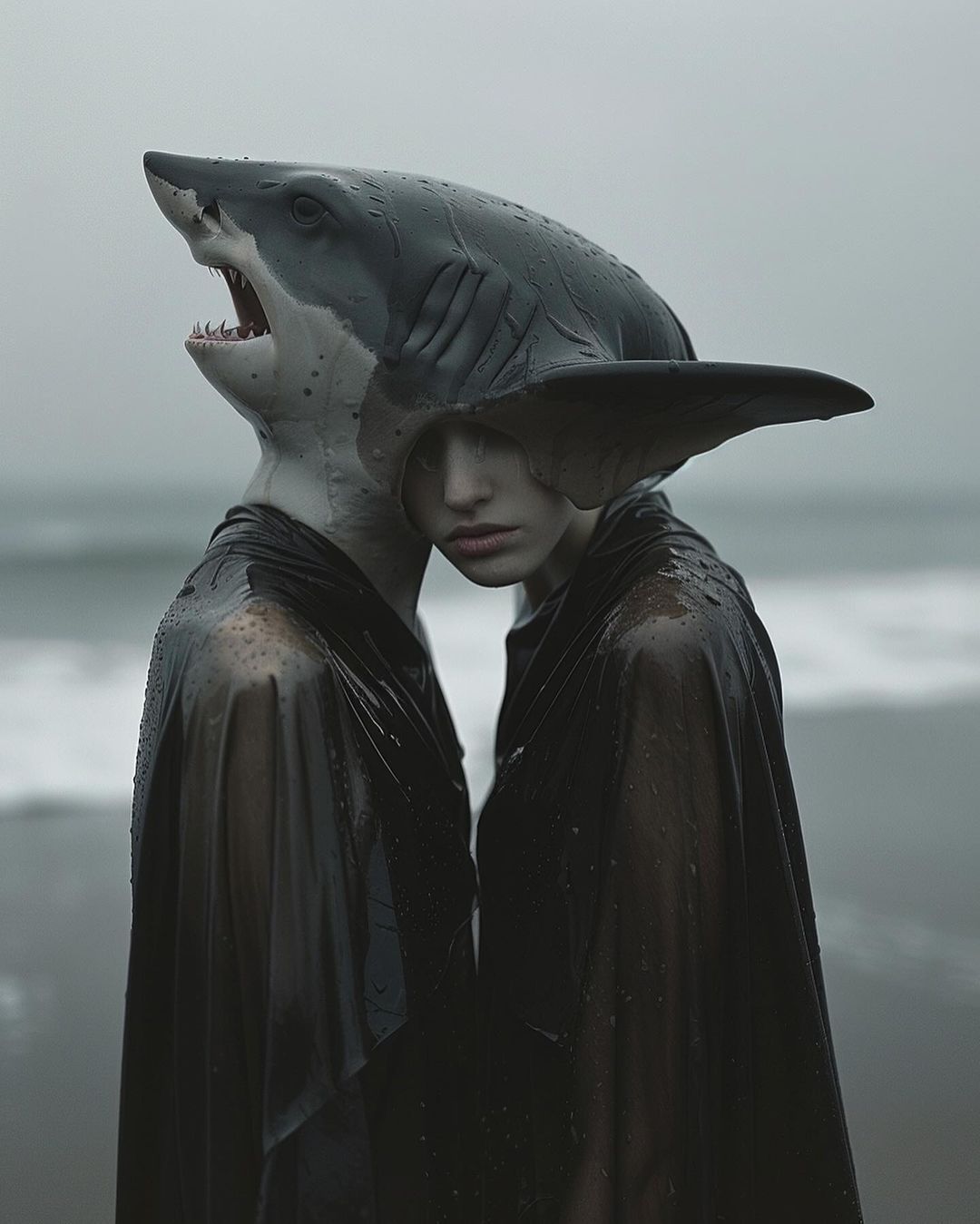
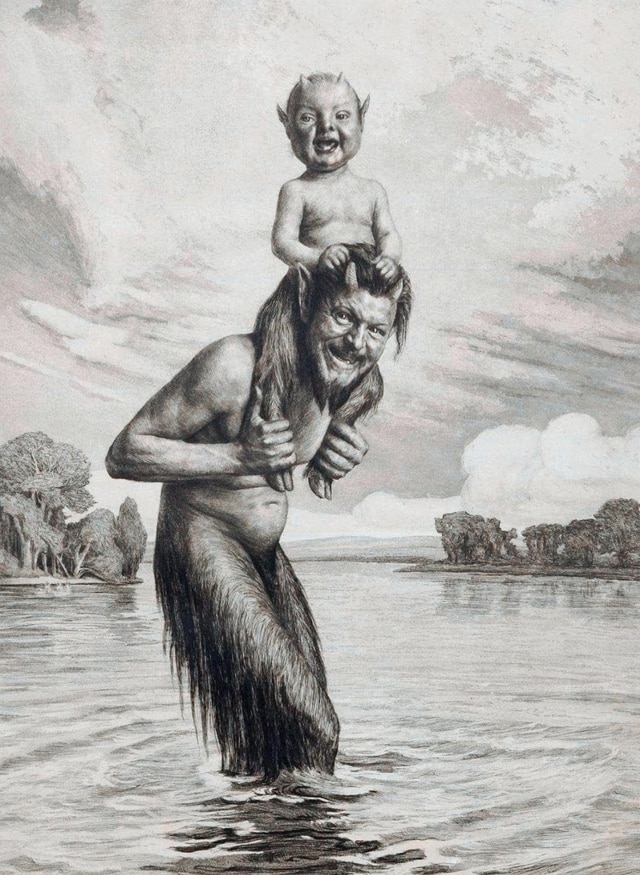
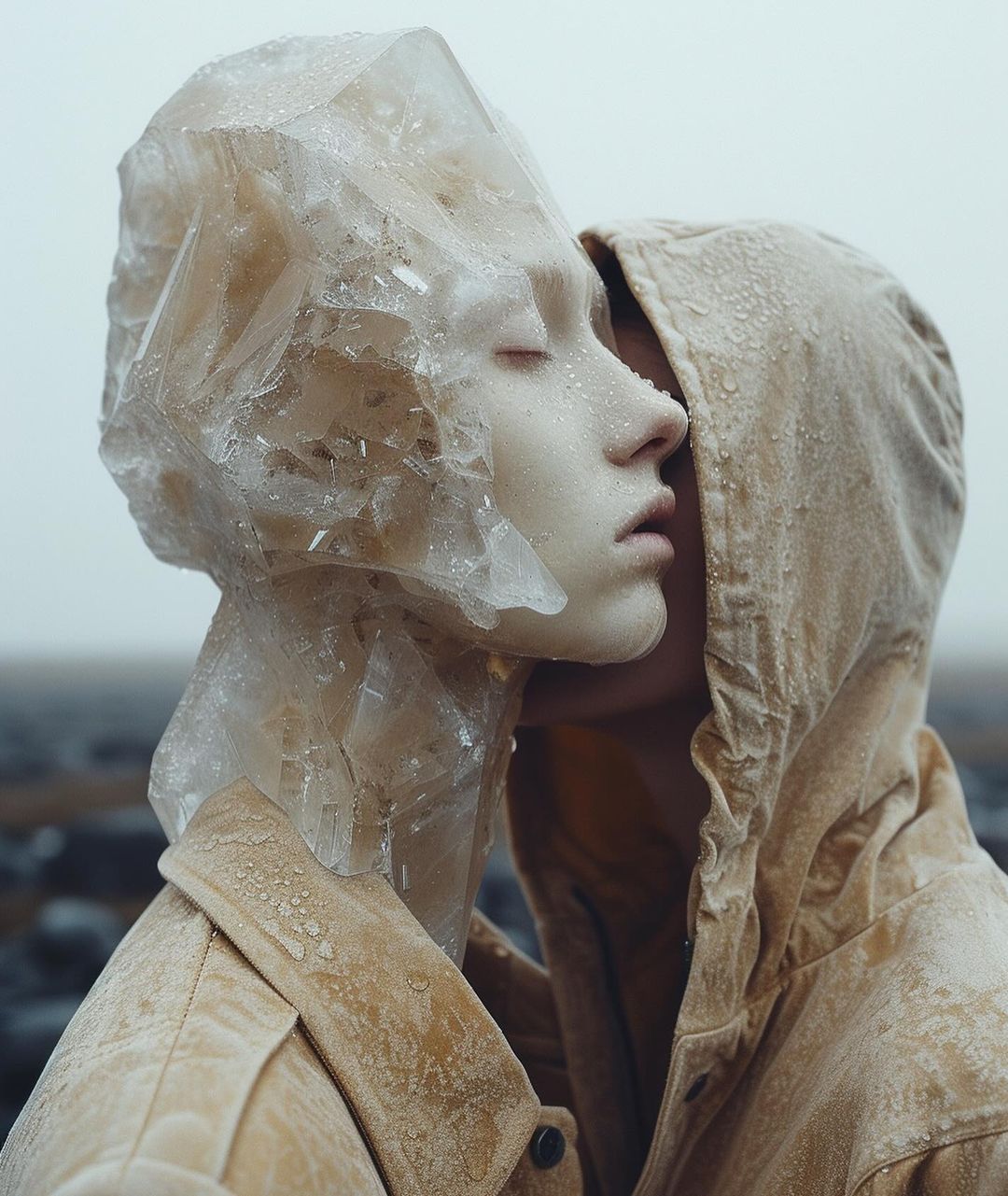
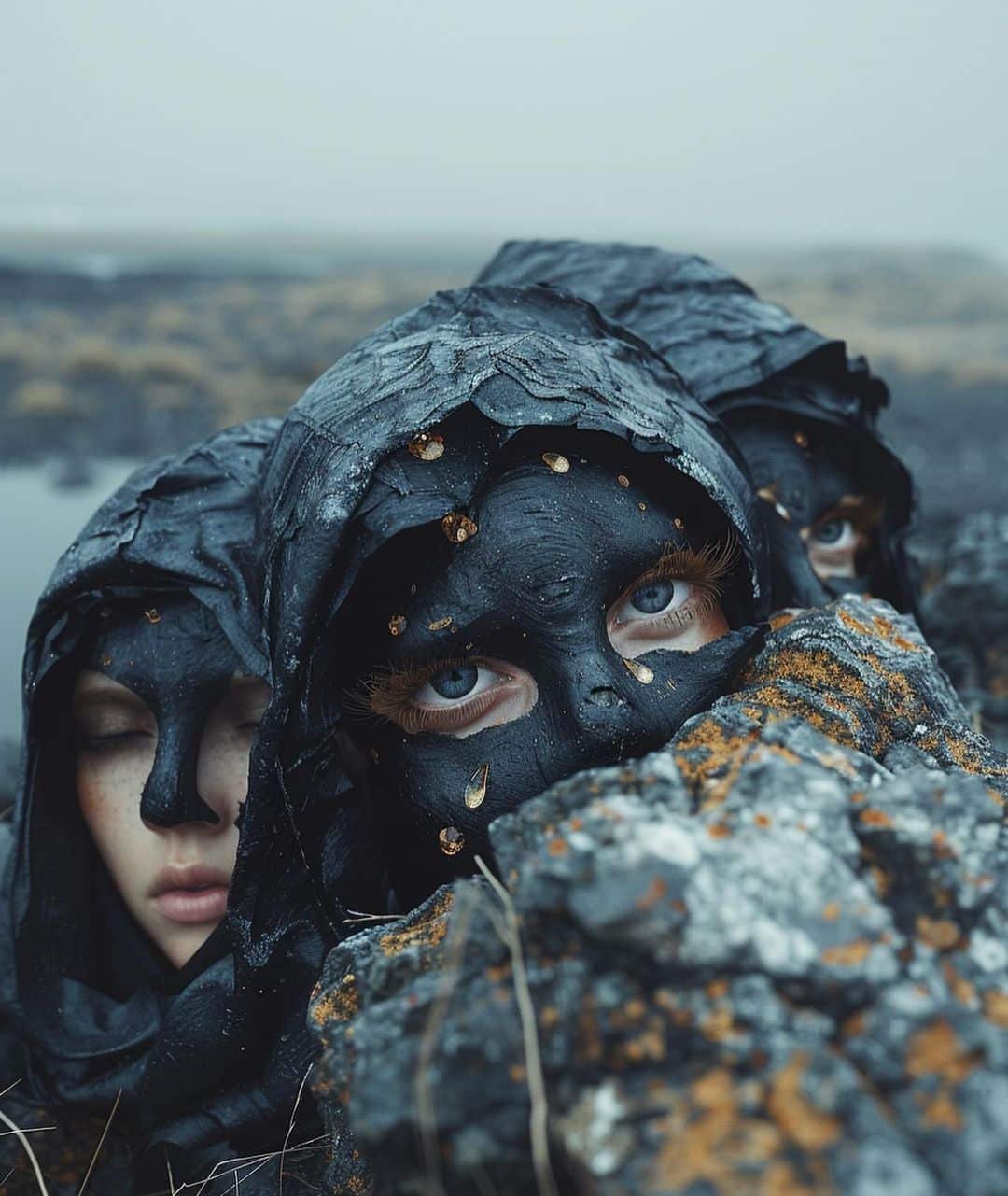
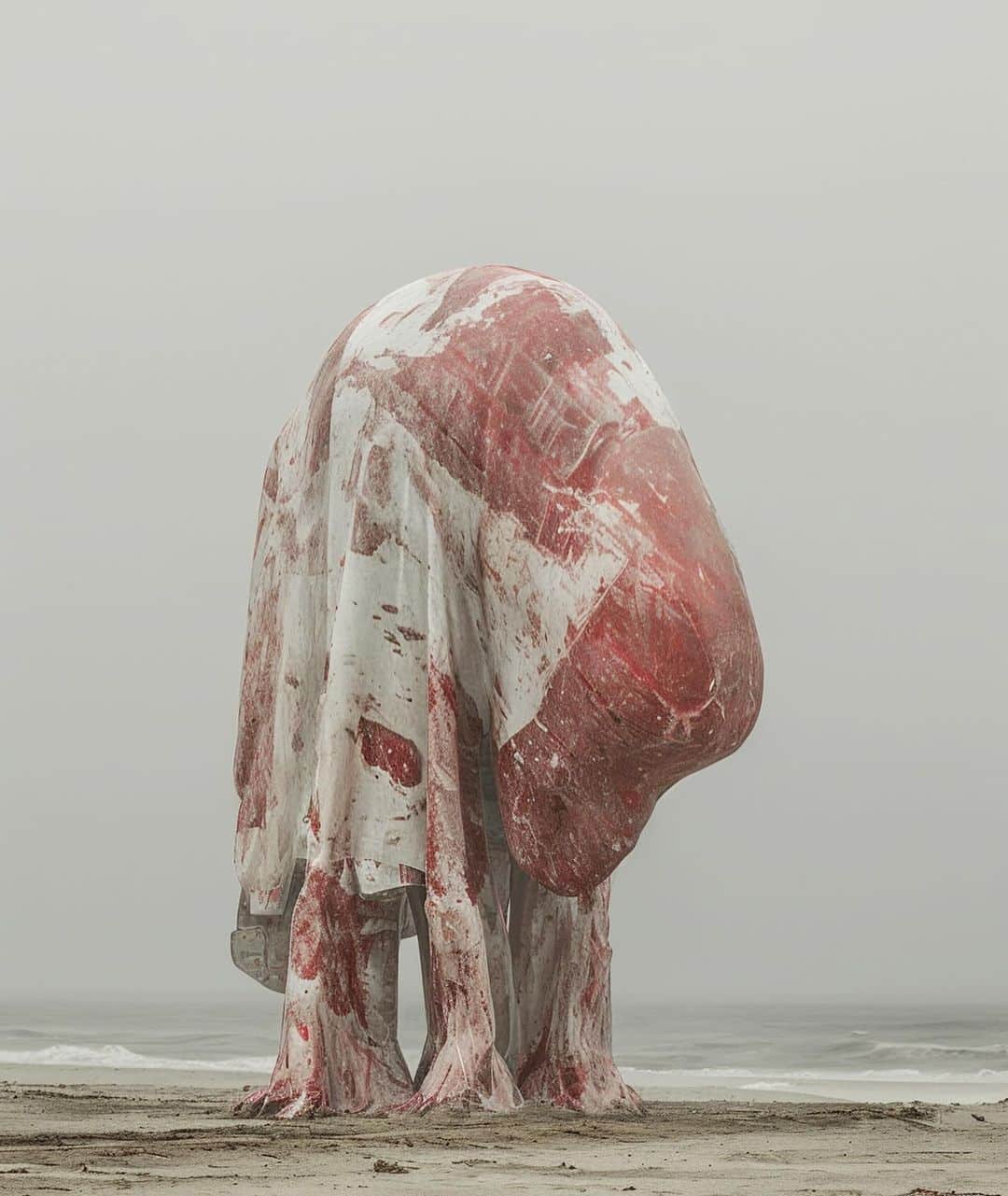
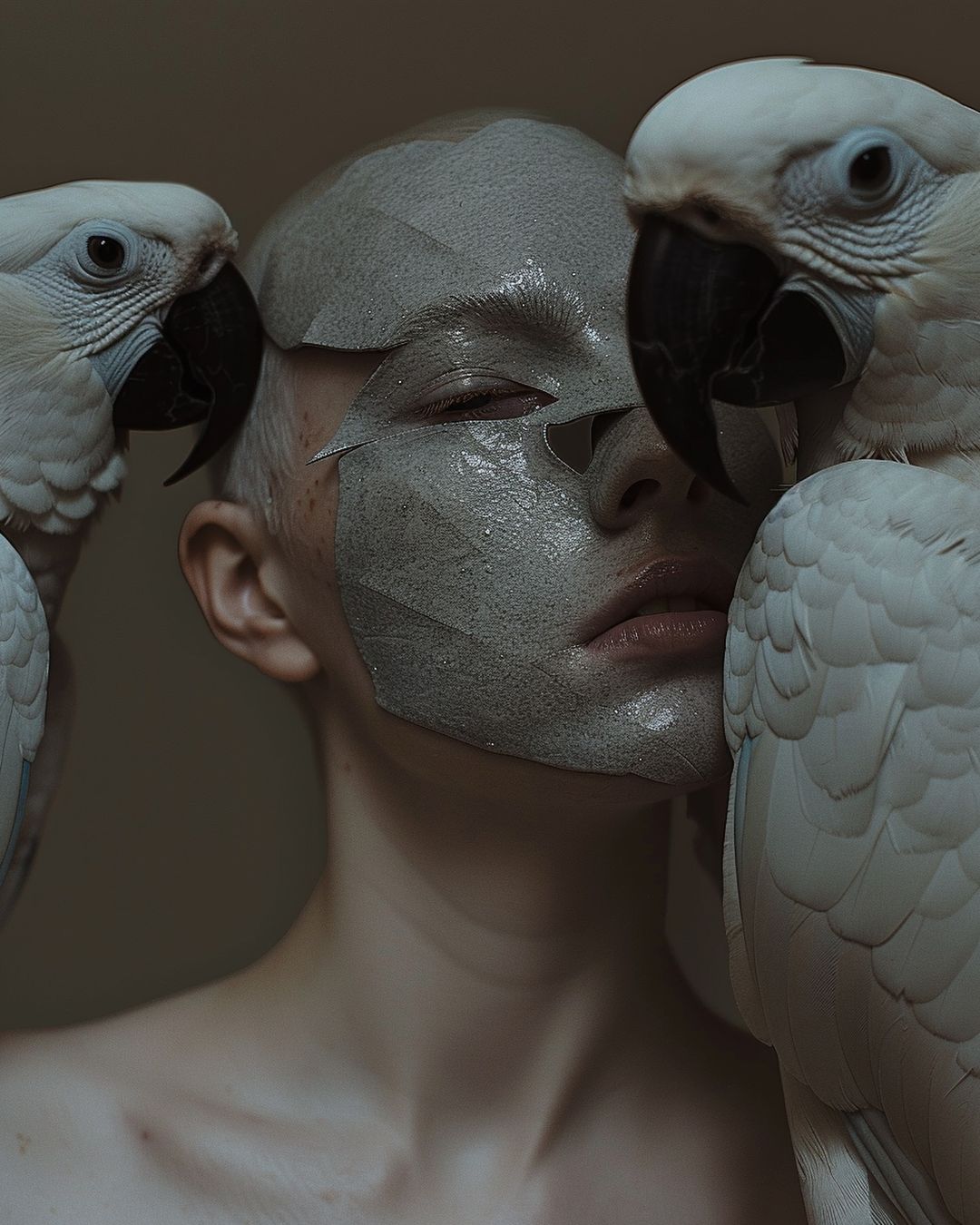

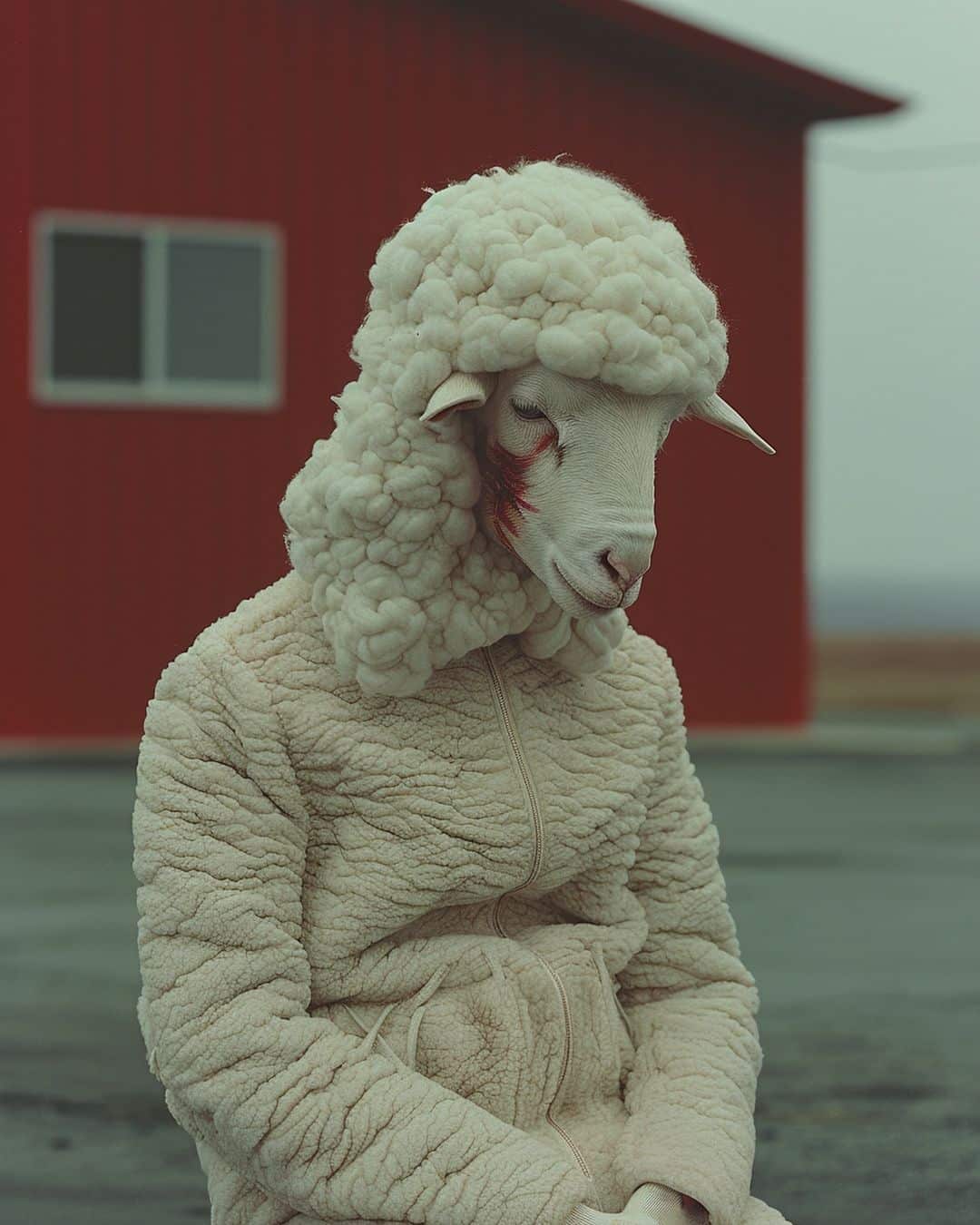
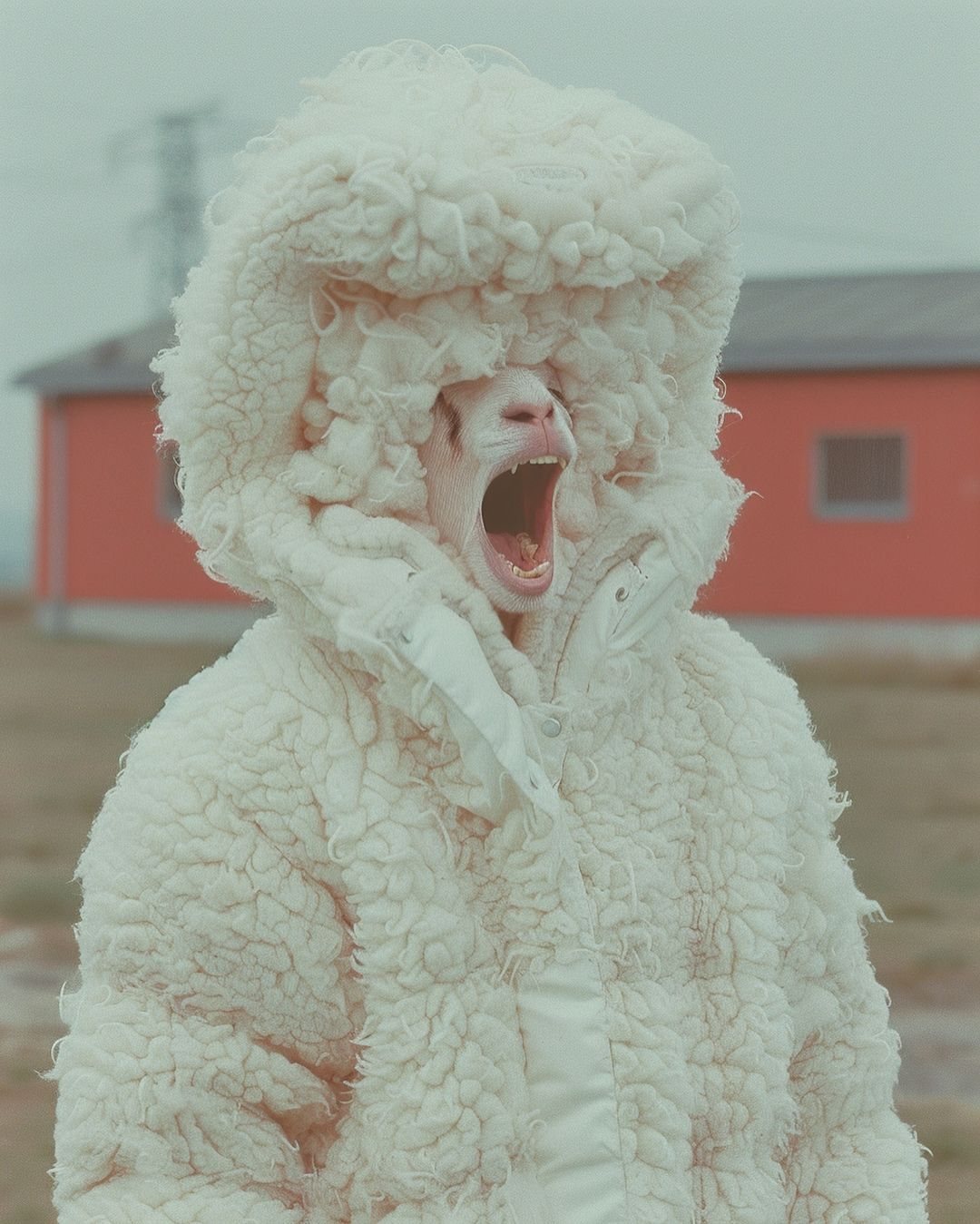
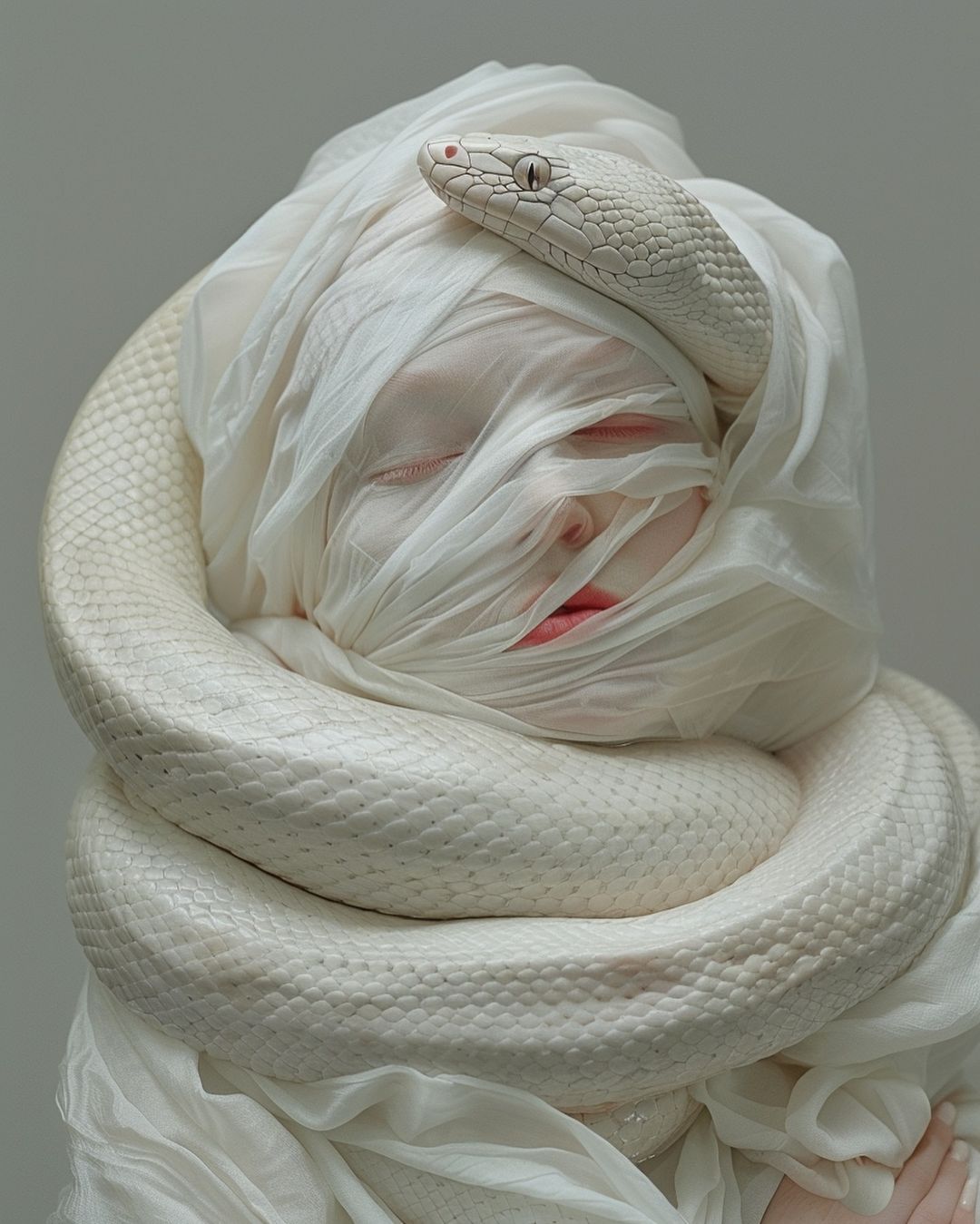
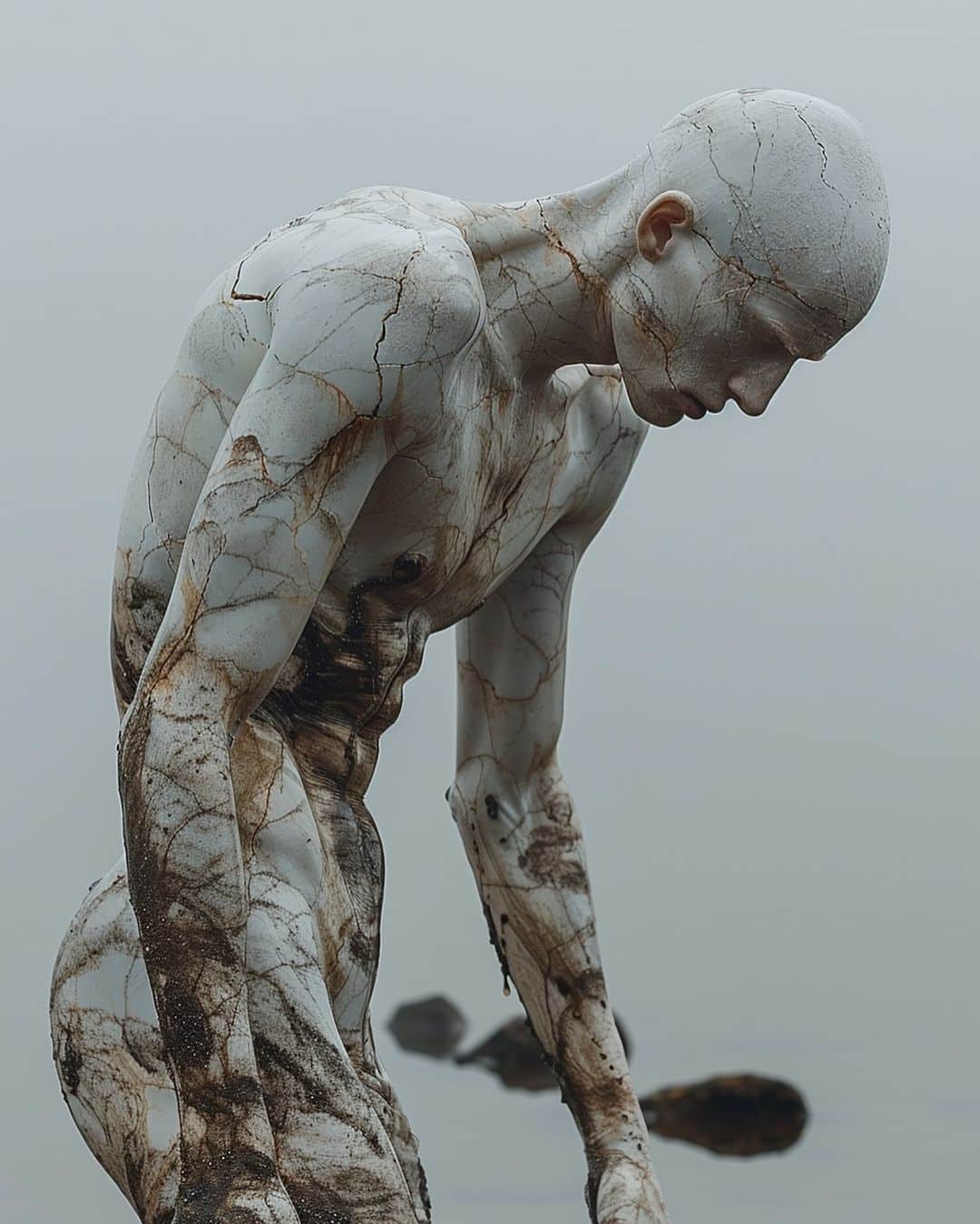

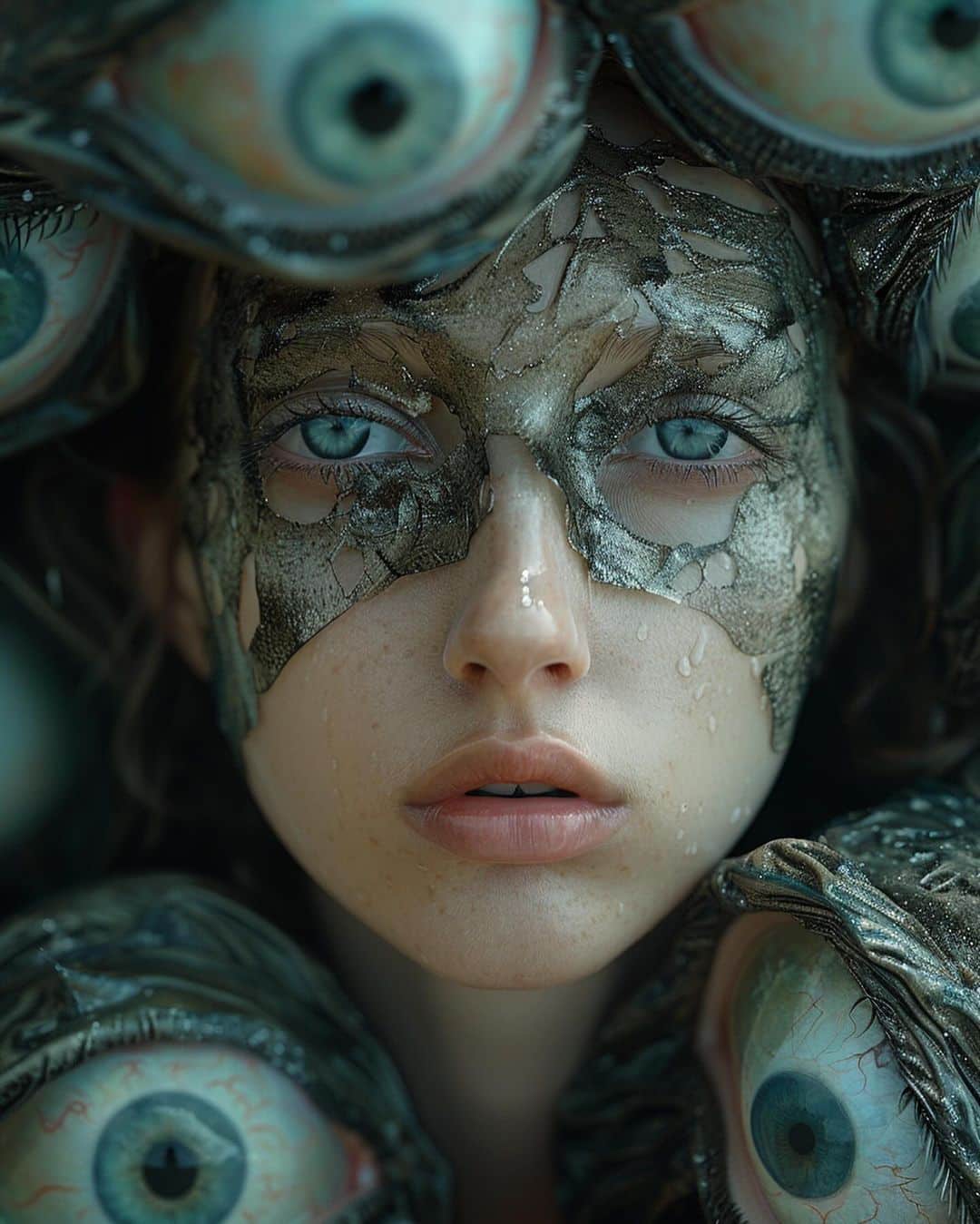
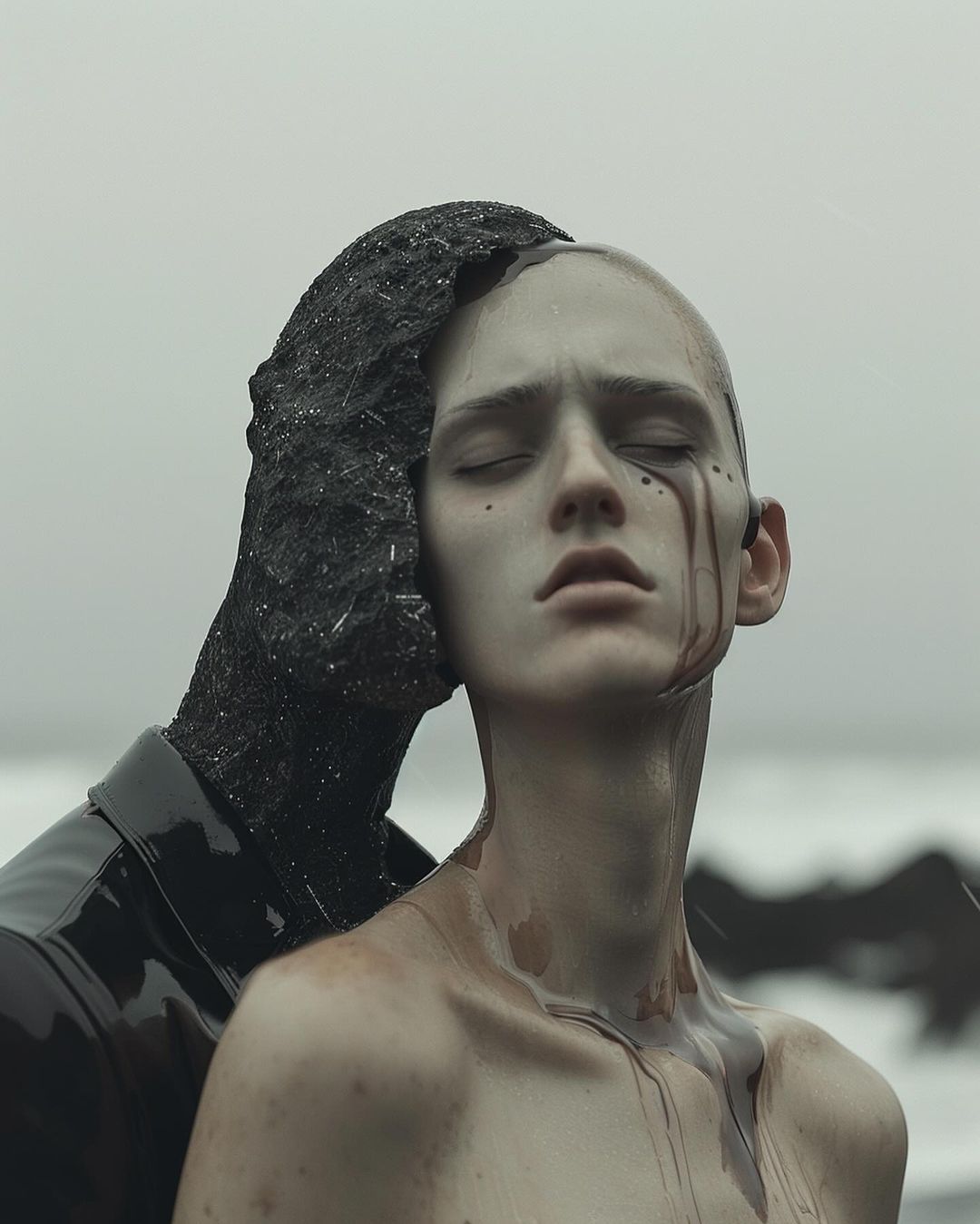
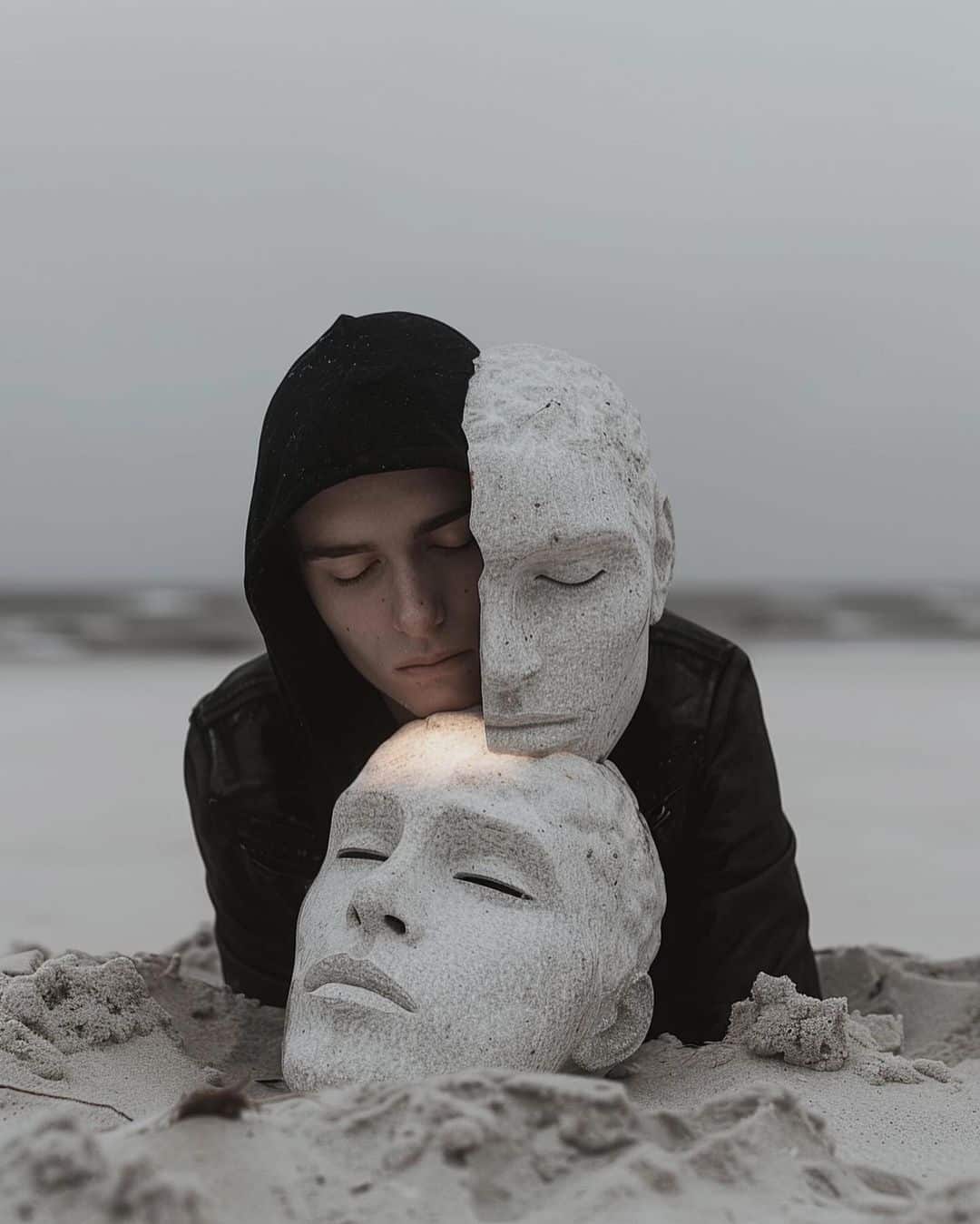
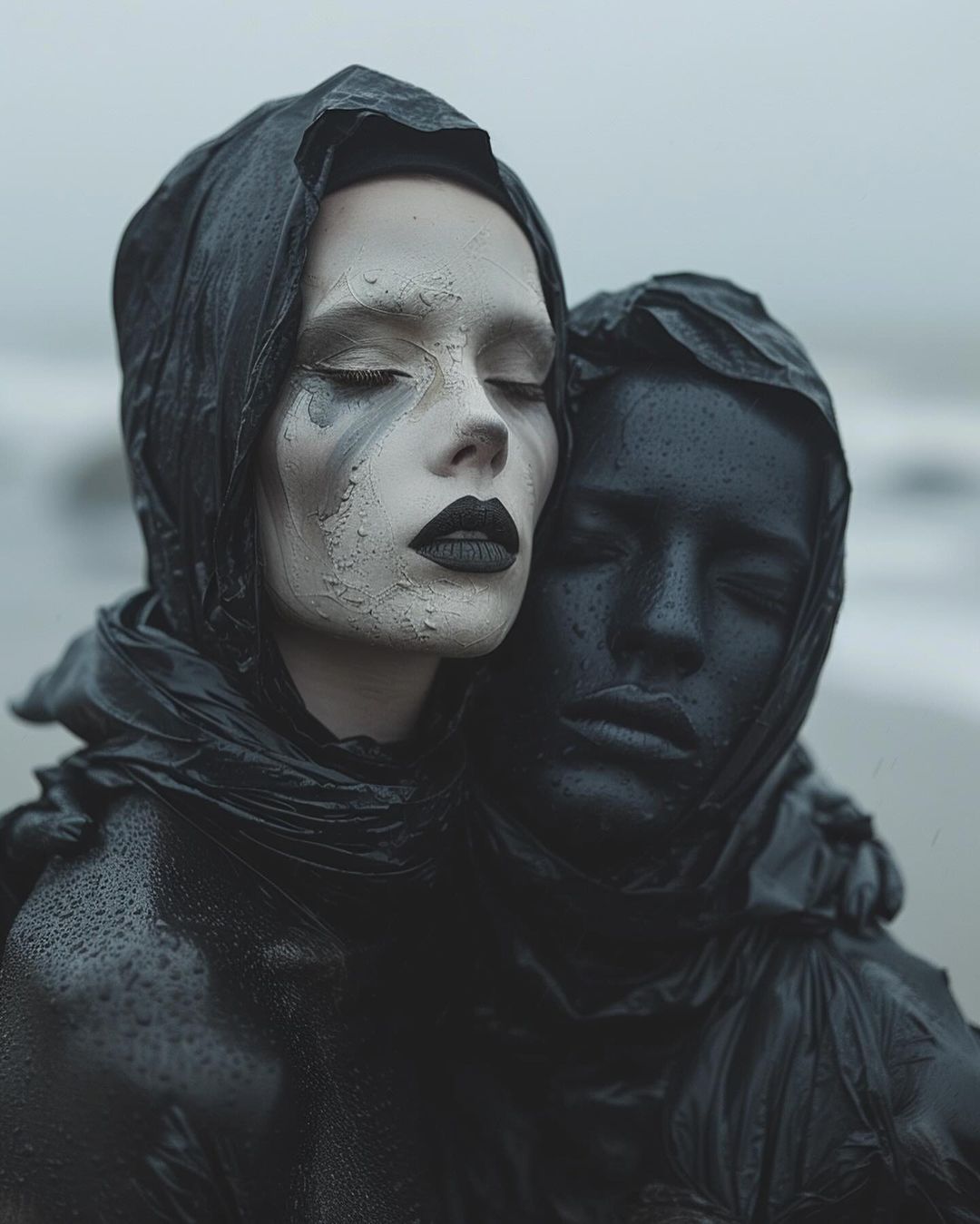

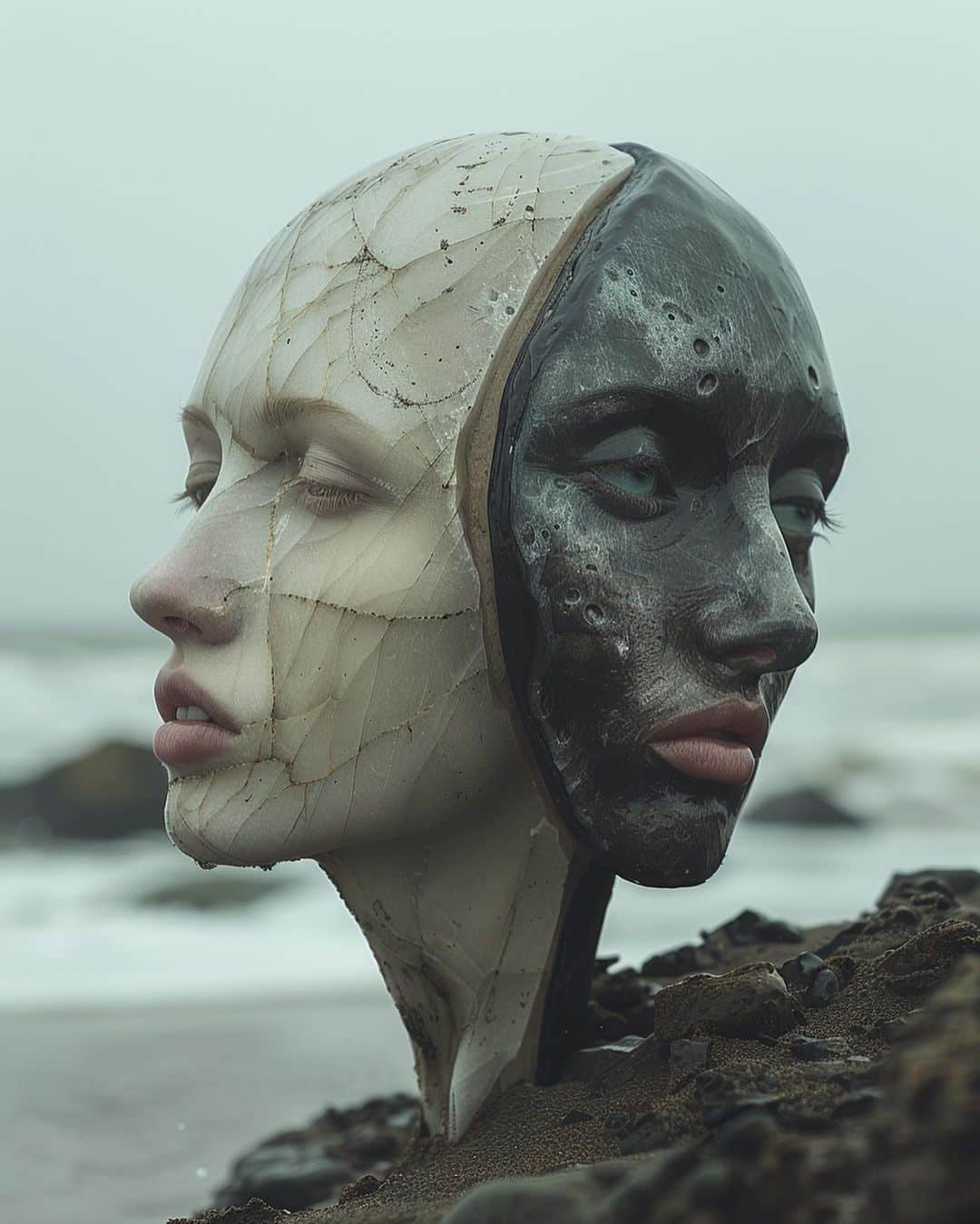
0 Comments